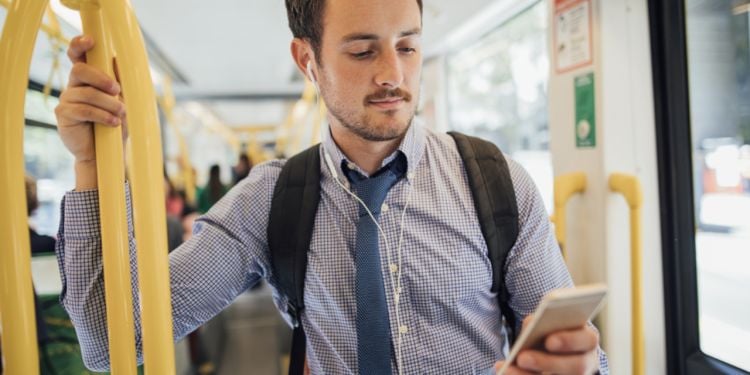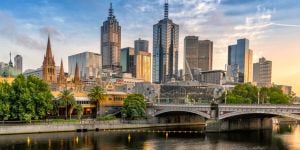
Melbourne has a growing population which has led to urban sprawl and lots of new houses being built on the outskirts of the city. Commuting to work is something lots of us have to do, and trying to find the easiest way can be a challenge, especially if you want to avoid crowds and long commute times. However, Melbourne provides a range of different options to suit nearly everyone, whether you're heading into the city every day for work or trying to find the shortest route to the pub.
Public transport in Melbourne
Public transport in Melbourne is generally efficient and reliable, with several interlinking modes, which include buses, trains, and trams. The Public Transport Victoria website has all the information you need for planning a journey, including any disruptions or news you may need to know. The Public transport system is run by a ticket system called Myki, which is a hard card you top up and can be used across all transport modes. Your fare is determined by how far you are traveling and your ticket type, i.e., a 2-hour ticket or daily. If you are traveling Monday to Friday from Zone 1 to the city center, you can pay up to $150 a month. Pricing will vary depending on your zone.
Trains
The train system in Melbourne is operated by Metro Trains Melbourne. It covers the metropolitan area and extends well outside of the city. The trains are a popular mode of transport for commuting and getting around, for both short distances within the city and longer treks to the outer suburbs. Most train lines run every four to five minutes during the peak hour and every twenty minutes during off-peak times. Though trains can be very busy during rush hour, you are usually able to squeeze on without too much trouble. A great tip to avoid peak hours is asking to change your work hours to slightly outside of the nine-to-five schedule, which helps avoid the crowds. Melbourne workplaces, especially post-Covid-19, are generally quite flexible, so this shouldn't be an issue.
Buses
Buses operate throughout Melbourne, covering a wider area than trams and trains. They are especially useful for reaching areas not served by other forms of public transport, including outer suburbs and regional areas, although they can be slow and are impacted by traffic.
Trams
Melbourne's trams are iconic, and the network is the largest in the world. As well as being a tourist attraction, the trams provide convenient transportation in the city center and also serve some inner suburbs.
Cycling in Melbourne
An increasingly popular way to get to work in Melbourne is to ride your bike. With the benefits being tenfold; no traffic jams, very inexpensive, and great for the body and mind, many people are opting for this. People are said to be saving up to $15,000 a year in reduced car and public transport fees. Melbourne has an extensive network of bike lanes and paths, with plans for the network to grow in the next few years. To encourage people to bike, the city provides bike-sharing programs, such as Melbourne Bike Share, where you can rent bicycles for short-term use.
Taxis, Uber, and carpooling in Melbourne
Taxis and ride-sharing services like Uber are widely available in Melbourne. You can easily book a ride through smartphone apps or find taxis at designated ranks throughout the city. Ride-sharing services offer a convenient and often cost-effective option for getting around, and classics like Uber are not the only offerings on the market. Lyft, Ola, and DiDi (which focuses on commutes) are also worth checking out.
Carpooling is yet to really take hold in Melbourne. There are a couple of websites, like Carpool in Australia, where you can enter where you need to go and whether you need a lift or are driving, and you can see what comes back in your search. However, this is not a popular way yet for people in Melbourne to commute to work – though we're sure there'll be an app that resolves that soon.
Owning your own car in Melbourne
Owning a vehicle in Melbourne is not uncommon, but the efficacy of having a vehicle really varies depending on where you live, your lifestyle, and your personal preference. If you live in a suburban area where public transport options may be limited, owning a car provides flexibility and convenience, especially for families or individuals who require regular access to transportation. Additionally, if your work involves travel that can't be easily accomplished using public transport, then it might make sense to have a vehicle.
As with owning a car anywhere, owning a car in Melbourne comes with expenses such as purchasing, insurance, registration, parking, fuel, and maintenance. Additionally, inner-city parking can be limited and expensive. Some people choose to forego car ownership due to the associated expenses and rely solely on public transport or other alternative transportation options.
Car sharing in Melbourne
Car next door is becoming increasingly popular, especially for weekend drives, and other options have popped up, like GoGet. These apps work by connecting nearby users without cars with those who have cars. It benefits people without cars and those who have cars but don't necessarily use them all the time, as it offers them the opportunity to make a little cash. Car owners in Melbourne can register their vehicles on the website, and those looking to rent a car search for cars within a certain radius. It can generally be pretty cheap, around $5 - $10 an hour, and is really useful if you need a car for a day or two.
Walking around Melbourne
Another option for getting around Melbourne is your trusty own two feet or using your feet in combination with public transport. On the whole, Melbourne is a walkable city, particularly in the central areas, with good pavements and pedestrian options. Many attractions, shopping areas and dining areas are within walking distance of each other. Walk Score is a metric that quantifies the walkability of an area, and Melbourne consistently ranks highly, with lots of neighborhoods and suburbs connected to amenities and services on foot.
We do our best to provide accurate and up to date information. However, if you have noticed any inaccuracies in this article, please let us know in the comments section below.












Comments